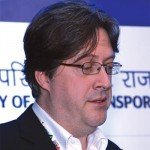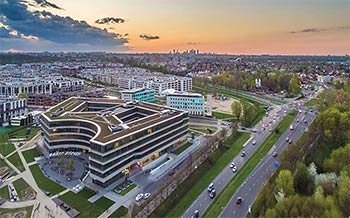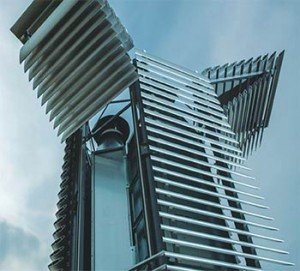
The more the responsible authorities are aware of both the vision and the pragmatic possibilities, the quicker the intelligent solutions will be available to the Indian (smart) city residents.
– Thomas Meyer
Guy Perry: Back in 2002, our Poland project was presented to the German school as a potential site but it was rejected, because everyone was saying high quality neighborhood could not be built in Poland. But finally, the German school was opened on that site two years ago. But the question is how quickly do you think we can transform in a positive way in India with Indians because the project in Poland was entirely done with Poles.
Thomas Meyer: We are a small company with 35people but is handling ITS in big projects. It was fully about the question, do we have any kind of chance to bring, let us say, our high sophisticated solutions to an environment like here and the answer is ‘yes go there’. We are here to share knowledge. Being informed is one of the most important aspects of an intelligent approach.
In a normal city with hundred junctions, like in Poland, we are collecting 100 million records a day. It is a treasure chest with very valuable data, which we will be able to use later. You must write tenders to be able to from level 0 and 1 (logic programming of TC, local adaptive optimization, Steering traffic controller (TC) by hand, Gathering data, Monitoring the system and Annual scheduler), for level two (Network optimization, Traffic model & traffic state prediction, Strategy management, Event Management, Traffic social web portal, and Social media like twitter) and level three (C2X,Green light optimal speed advisory and Cooperative ITS). One need to have the vision in mind.
Over the past 10 years, I see the traffic in India has not changed. First thing which must be done here is a little more of enforcement to make the vehicles stay on the lanes which will be difficult. The recognition of the vehicles will be a huge challenge. If you do it with loops, there will be some problems; if you do it with camera, optical oriented systems, it will be the better approach.
 Guy Perry: One thing that is very clear is that right now India has one of the lowest carbon footprints per capita in the world. How can we best keep a modest carbon footprint while developing mobility systems in Indian cities and in India in general?
Guy Perry: One thing that is very clear is that right now India has one of the lowest carbon footprints per capita in the world. How can we best keep a modest carbon footprint while developing mobility systems in Indian cities and in India in general?
Rupesh Mehta: Again, a question linking to the transport mobility. I think by strengthening of the transport system and technology penetration, we can tackle all pollution or footprint related issues to a certain point.
Guy Perry: Should the same cars that are produced for European roads or other roads around the world be for India?
Rupesh Mehta: Basically, the answer to that is no. When we talk about adopting the same technology as it is for the different countries is something which does not work well. You go to different countries; you face different challenges and you must have different technologies to meet that country’s requirement. There is the HSE policy which is getting strengthened. Instead of getting into the European technology directly, there should be a panel at the administration level wherein the members from the European technology need to be invited on board for their inputs.
Guy Perry: In India, the requirement is considerably less stringent when it comes to environmental concerns. Is that the right way to go which is easier to build and you can build them or should we have a higher?
 Prashun Dutta: As you may have guessed I am on the holistic trip. So, my first point would be, do we need to emulate whatever has happened elsewhere or should we have objectives of our own which reflect our local conditions and requirements. If our carbon footprint goes anywhere near the US, the world will collapse perhaps because I think there it is 1:16 land area-wise while we are 1:1. So, I think, when the US developed, you did not keep carbon footprint on the mind, naturally, because that was not criteria at all. But today we can keep that in mind rather than enhance our a number of cars and make it easy. Should we have some other objectives which are more in tune with what India is today and which will perhaps be more environment friendly because today we are environment conscious.
Prashun Dutta: As you may have guessed I am on the holistic trip. So, my first point would be, do we need to emulate whatever has happened elsewhere or should we have objectives of our own which reflect our local conditions and requirements. If our carbon footprint goes anywhere near the US, the world will collapse perhaps because I think there it is 1:16 land area-wise while we are 1:1. So, I think, when the US developed, you did not keep carbon footprint on the mind, naturally, because that was not criteria at all. But today we can keep that in mind rather than enhance our a number of cars and make it easy. Should we have some other objectives which are more in tune with what India is today and which will perhaps be more environment friendly because today we are environment conscious.
 TrafficInfraTech Magazine Linking People Places & Progress
TrafficInfraTech Magazine Linking People Places & Progress